Raytheon has delivered its 250th Rolling Airframe Missile (RAM) MK49 launcher to the US Navy.
According to the company, the launcher will be deployed aboard the USS Pittsburgh, a newly built San Antonio-class amphibious transport dock.
Raytheon, part of RTX, serves as the prime contractor, while German industry partner RAM-Systems GmbH contributes to the programme’s international success. Customers include Egypt, Greece, Japan, South Korea, Mexico, the Netherlands, Saudi Arabia, Qatar, Türkiye, and the UAE.
“The RAM missile system has been a cornerstone of naval defense capabilities for decades, and this 250th GMLS delivery is a testament to the important role it plays in defending U.S. and allied forces,” said Barbara Borgonovi, president of Naval Power at Raytheon.
“As we continue to modernise and expand the deployment of RAM, it remains a critical asset in protecting our sailors and ships from evolving threats.”
The RAM system is designed to protect vessels from a range of threats including anti-ship cruise missiles, drones, aircraft and other airborne dangers. It is deployed on platforms ranging from corvettes to aircraft carriers, offering flexible and scalable protection for high-value naval assets.
In response to increasing global demand, Raytheon and its German partners are ramping up investment to boost production and improve system capability. The company says its manufacturing capacity for the Guided-Missile Launching System (GMLS) has recently doubled.
Upgrades are also underway to enhance the RAM launcher and missile system to ensure it remains effective against evolving threats, including improved integration with new ship classes. Raytheon noted that the RAM programme will mark its 50th anniversary in 2026, a milestone that underscores the system’s enduring value in maritime defence.


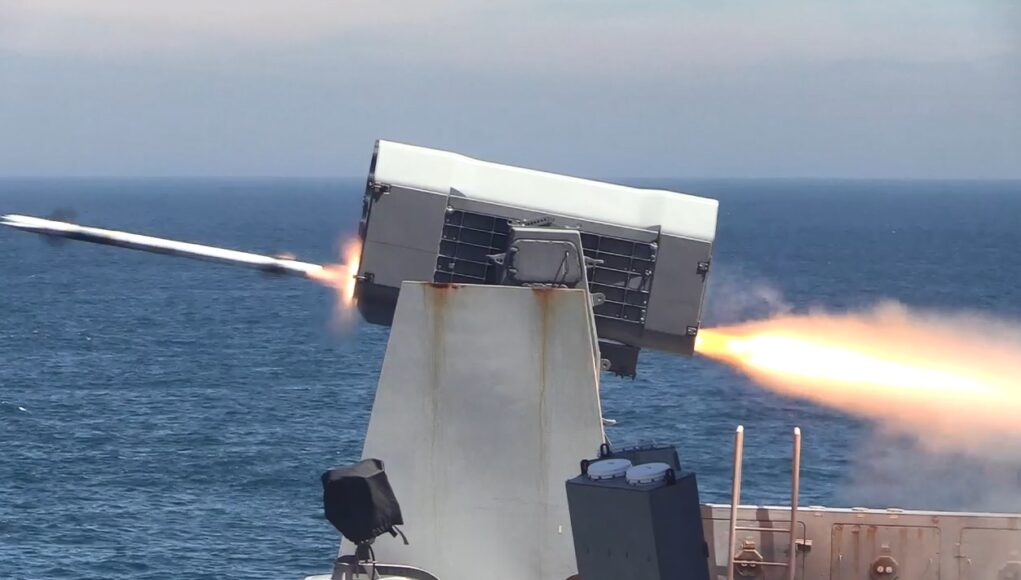


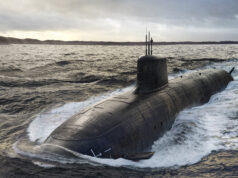
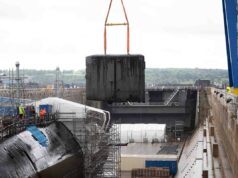
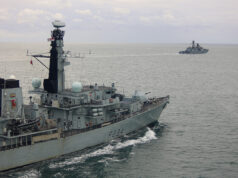
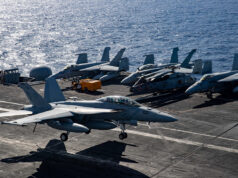
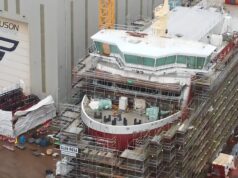


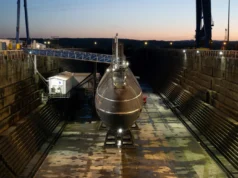

Why hasn’t this system been fitted to POW and QE UK carriers
The argument is, an aircraft carrier doesn’t need it becuase it’s part of a task group and has wildcats. Oh, and that means them spending money. I say every little helps, and reloading launchers on aircraft carriers would be easier. It also would be better to have a cluster of martlets on the 30mm, so it doesn’t need a different supply chain for another missile type.
there are many nations using the system, after for it’s performance as a CIWS which is one of its standout features it’s also a compact sized launcher. similar to the phalanx one. I think it would be a great option for the UK carriers. price wise it and it’s missiles are vastly cheaper than the ceptors and ESSM)VIPER. IT’S A OPTION TO Bung IN A RIVER WHICH WOULD PLEASE THOSE WHO WANT THE RIVERS TO BE TURNED INTO BATTLESHIPS. a 57mm gun, two Dsm30mmm canon from a retired T23 AND A SEARAM? TASTY little street fighfer of a ship.
Don’t get me wrong. Having this on the carriers would be great. However, having a system would create another missile for inventory and a logistics and supply chain that the Navy doesn’t want to deal with. I would like to have a similar system that utilises the current missiles used by the navy.
Why are my eyes drawn to the rust! Cheap paint maybe!
Apparently, the Royal Navy briefly tried out the older version of SeaRAM in 2000 or 2001 I think? They weren’t impressed with it at the time for whatever reason, I’m not sure what exactly their issues with it were. The RIM-166 missile has been improved since then, so perhaps they’d feel differently nowadays?
There’s two versions: the compact SeaRAM & the heavier RAM stand-alone version, pictured in the header image. SeaRAM is literally the Phalanx system, with a 11 capacity missile launcher instead of the 20mm cannon. SeaRAM fits in the exact same footprint as Phalanx, and also uses its own compact radar & EO systems autonomously like the Phalanx, so that it can still find & engage threats even if all the ship radars/sensors are destroyed. The dedicated, heavier 21 missile RAM launcher however, has no sensors of its own, so is wholly reliant on the ships’ own (but far better) sensors for coverage, with better CM integration to do so. It also requires deck penetration unlike its SeaRAM cousin, so I don’t know if you could put it on the 30mm mount locations on the carriers.
A far more serious issue would be, how well does the dedicated RAM launcher work with the UK combat management system? I don’t know, but I’d be very surprised if it worked without needing major software alterations to do so!
They did trial Searam. They also trialed a marlet 30mm cannon cluster on a type 23 no too long ago. The trial was a success, but wasn’t implemented, I think, becuase of the exhaust ploom was hitting the door. To be honest, that sounds like a poor reason. Well, that’s what I heard.
I suspect it comes down to limited budget and where best to spend it.
Ideally there would be something like this available for the carriers and maybe also a few of the RFA vessels but I assume they considered that the umbrella provided by the T45 was sufficent and there are bigger gaps else where that needed filling.
The Martlet/30mm combo wasn’t a success- thats why it wasn’t taken any further.
No perceived need, does not meet Carrier CONOPS, lack of funds, none UK missile or other reason.
Select from above.
As far as I can recall. The RAM missile is expensive, has a short range and a longer minimum range of engagement than CAMM. CAMM has in addition a 360 degree coverage and multiple target engagement as well as being able to act in the surface-surface role.
And should be more widely fitted!
AA
Any trials or thoughts on adapting the RAM launcher to fire ASRAAM, Starstreak or Martlet? I believe Thales have designed a Multipurpose launcher that fires Martlet, rockets and various others. Could be an useful addition. Not too fancy. The UK alone seemingly doesn’t think any missile defence on the carriers are needed, nor additional 30/40mm and not sure that any decoy launchers are fitted either. Some Dragonfire might do the trick but no talk of that on the carriers yet.
It might be much easier to take the new SEA Ancilia decoy launcher, that fires 130mm decoys via compressed-air & the Royal Navy bought last year, then make it slightly bigger to fire 4 to 8 CAMMs. It’s a trainable launcher, so you could either modify/remove the CAMM tip-over mechanism software for it, or just have the launcher have very limited depression by design, so that it’s launched at a high enough angle that the tip-over mechanism doesn’t tilt the missile downwards at a steep angle for sea-skimming targets. Plus it’d be relatively compact so it could also fit on logistics, amphibious ships etc, that don’t have much space to begin with. If you’re really, really, really pushed for space, you could do a combined decoy/4 CAMM launcher, instead of a 8 “Compact CAMM” like I suggested at the beginning of my post.
The French unveiled a combined decoy/Mistral launcher last year. To quote the Naval News article on it;
“…The new modification consists in fitting four Mistral 3 short-range surface to air missiles on each side of the NGDS launcher, meaning a single NGDS can deploy a up to 8 ready-to-fire missiles. So-called “first rank” vessels of the French Navy are typically fitted with two NGDS launchers: With this upgrade, Safran (and MBDA) could provide the Marine Nationale (and existing users of the NGDS such as the Republic of Singapore Navy) with a rather simple solution to adopt RAM-like CIWS or point-defense missile systems (PDMS) consisting in a total of 16 missiles…
A key advantage of the modification proposed by Safran is that NGDS doesn’t become a dedicated missile launcher. It retains the ability to deploy up to 8 Lacroix 150 mm caliber SEALEM and SEALIR decoy rockets respectively deploying advanced radio frequency (RF) and infrared (IR) payloads. NATO standard 130 mm calibre munitions can also be deployed, as demonstrated during field tests earlier this year. Another advantage of the solution, is that as for the decoys, crewmembers can fairly easily and rapidly reload the NGDS with spare Mistral missiles, while underway at sea…”
Camm/ asraam and Martlet have very different launch modes. Camm is hoofed out a vertical launcher by compressed air before it’s motor ignites, asraam blasts off its rail using the main motor, and Martlet uses an initial quick thrust to clear the launcher before igniting the main motor at a safe distance.
The tremendous blast from either Camm or asraam to me rules out any sort of horizontal/steep launch from a ship off “ad-hoc” launchers.
Martlet on the other hand seems tailor made for the job as it should not be beyond the wit of man to incorporate a comparatively light blast deflector onto a mount.
One has to assume the RN has a real reason it doesn’t fit extra close in defence weapons to the carriers other than simply cost……? If bigger faster anti
ship type weapons are approaching the carrier, then something has gone wrong elsewhere and a few lightweight defence missiles would not cut it. HOWEVER, in the new “age of the drone” , either above water or on the water, then the 30mm (with better effectuators…I believe smart ammo is available) and Martlet combo would seem to be a winner especially in swarm attacks, and available now. The 40mm bofors might be better but a considerable outlay would have to made to equip on a large scale.
AA